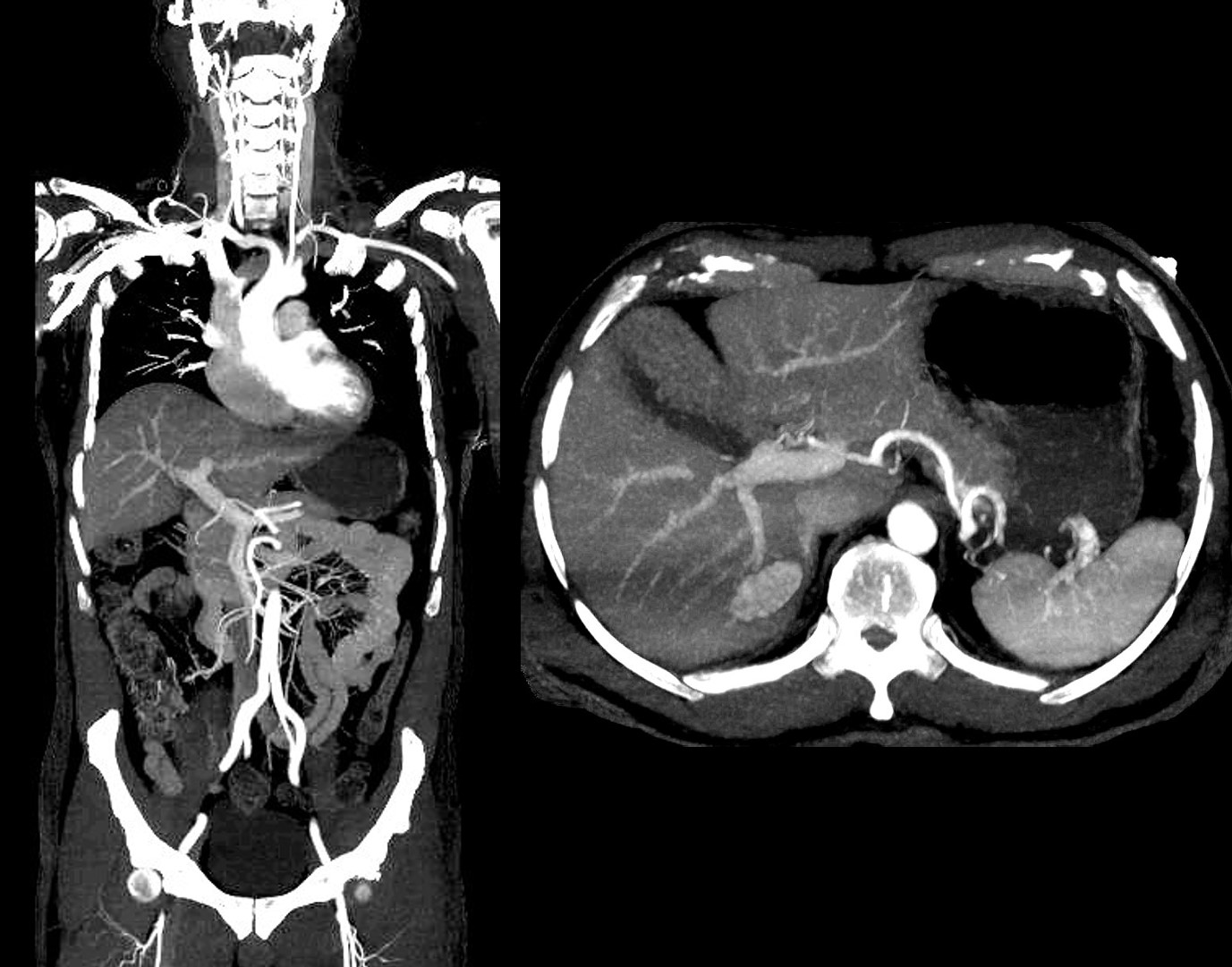Whole-body computed tomography is safe, effective and efficient in the severely injured hemodynamically unstable trauma patient
Abstract
Trauma is a complex pathology that requires an experienced multidisciplinary team with an inherent quick decision-making capacity, given that a few minutes could represent a matter of life or death. These management decisions not only need to be quick but also accurate to be able to prioritize and to efficiently control the injuries that may be causing impending hemodynamic collapse. In essence, this is the cornerstone of the concept of Damage Control Trauma Care. With current technological advances, physicians have at their disposition multiple diagnostic imaging tools that can aid in this prompt decision-making algorithm. This manuscript aims to perform a literature review on this subject and to share the experience on the use of Whole Body Computed Tomography as a potentially safe, effective, and efficient diagnostic tool in cases of severely injured trauma patients regardless of their hemodynamic status. Our general recommendation is that, when feasible, perform a Whole-Body Computed Tomography without interrupting ongoing hemostatic resuscitation in cases of severely injured trauma patients with or without signs of hemodynamic instability. The use of this technology will aid in the decision-making of the best surgical approach for these patients without incurring any delay in definitive management and/or increasing significantly their radiation exposure.
Authors
Downloads
Keywords
- Whole-Body CT
- organ-selective CT
- Damage Control Trauma Care
- Hemodynamic instability
- Trauma Centers
- Advanced Trauma Life Support Care
- X-Rays
- Focused Assessment with Sonography for Trauma
- Vascular System Injuries
- Operating Rooms
- Consensus
References
Gondek S, Schroeder ME, Sarani B. Assessment and Resuscitation in Trauma Management. Surg Clin North Am 2017;97:985–98. https://doi.org/10.1016/j.suc.2017.06.001.
Arora R, Arora AJ. Justification of whole-body CT in polytrauma patients, can clinical examination help selecting patients? Quant Imaging Med Surg 2019;9:636–41. https://doi.org/10.21037/qims.2019.04.02.
ATLS Subcommittee Group, Committee American College of Surgeons’, International ATLS working. Advanced trauma life support (ATLS®): The ninth edition. J Trauma Acute Care Surg 2013;74:1363–6. https://doi.org/10.1097/TA.0b013e31828b82f5.
Soto JA, Anderson SW. Multidetector CT of blunt abdominal trauma. Radiology 2012;265:678–93. https://doi.org/10.1148/radiol.12120354.
Wada D, Nakamori Y, Yamakawa K, Yoshikawa Y, Kiguchi T, Tasaki O, et al. Impact on survival of whole-body computed tomography before emergency bleeding control in patients with severe blunt trauma. Crit Care 2013;17:1–7. https://doi.org/10.1186/cc12861.
Jiang L, Ma Y, Jiang S, Ye L, Zheng Z, Xu Y, et al. Comparison of whole-body computed tomography vs selective radiological imaging on outcomes in major trauma patients: A meta-analysis. Scand J Trauma Resusc Emerg Med 2014;22:1–11. https://doi.org/10.1186/s13049-014-0054-2.
Dreizin D, Munera F. Multidetector CT for Penetrating Torso Trauma: State of the Art. Radiology 2015;227:338–55. https://doi.org/10.1017/CBO9781107415324.004.
Kinoshita T, Yamakawa K, Matsuda H, Yoshikawa Y, Wada D, Hamasaki T, et al. The Survival Benefit of a Novel Trauma Workflow that Includes Immediate Whole-body Computed Tomography, Surgery, and Interventional Radiology, All in One Trauma Resuscitation Room: A Retrospective Historical Control Study. Ann Surg 2019;269:370–6. https://doi.org/10.1097/SLA.0000000000002527.
Chidambaram S, Goh EL, Khan MA. A meta-analysis of the efficacy of whole-body computed tomography imaging in the management of trauma and injury. Injury 2017;48:1784–93. https://doi.org/10.1016/j.injury.2017.06.003.
Smith CM, Woolrich-Burt L, Wellings R, Costa ML. Major trauma CT scanning: The experience of a regional trauma centre in the UK. Emerg Med J 2011;28:378–82. https://doi.org/10.1136/emj.2009.076414.
Huber-Wagner S, Biberthaler P, Häberle S, Wierer M, Dobritz M, Rummeny E, et al. Whole-Body CT in Haemodynamically Unstable Severely Injured Patients - A Retrospective, Multicentre Study. PLoS One 2013;8. https://doi.org/10.1371/journal.pone.0068880.
Ordonez C, del Valle AM, Parra M, Guzman-rodriguez M, Herrera-escobar JP, García C, et al. Single-pass Whole-body vs Organ-selective Computed Tomography for Trauma: Timely Diagnosis vs Radiation Exposure : An Observational Study. Panam J Trauma, Crit Care Emerg Surg 2019:1–6.
Huber-Wagner S, Lefering R, Qvick LM, Körner M, Kay M V., Pfeifer KJ, et al. Effect of whole-body CT during trauma resuscitation on survival: a retrospective, multicentre study. Lancet 2009;373:1455–61. https://doi.org/10.1016/S0140-6736(09)60232-4.
Tsutsumi Y, Fukuma S, Tsuchiya A, Ikenoue T, Yamamoto Y, Shimizu S, et al. Computed tomography during initial management and mortality among hemodynamically unstable blunt trauma patients: A nationwide retrospective cohort study. Scand J Trauma Resusc Emerg Med 2017;25:1–8. https://doi.org/10.1186/s13049-017-0396-7.
Hutter M, Woltmann A, Hierholzer C, Gärtner C, Bühren V, Stengel D. Association between a single-pass whole-body computed tomography policy and survival after blunt major trauma: A retrospective cohort study. Scand J Trauma Resusc Emerg Med 2011;19:73. https://doi.org/10.1186/1757-7241-19-73.
Kimura A, Tanaka N. Whole-body computed tomography is associated with decreased mortality in blunt trauma patients with moderate-to-severe consciousness disturbance: A multicenter, retrospective study. J Trauma Acute Care Surg 2013;75:202–6. https://doi.org/10.1097/TA.0b013e3182905ef7.
Çorbacıoğlu ŞK, Aksel G. Whole body computed tomography in multi trauma patients: Review of the current literature. Turkish J Emerg Med 2018;18:142–7. https://doi.org/10.1016/j.tjem.2018.09.003.
Godt JC, Eken T, Schulz A, Johansen CK, Aarsnes A, Dormagen JB. Triple-split-bolus versus single-bolus CT in abdominal trauma patients: a comparative study. Acta Radiol 2018;59:1038–44. https://doi.org/10.1177/0284185117752522.
Leidner B, Adiels M, Aspelin P, Gullstrand P, Wallén S. Standardized CT examination of the multitraumatized patient. Eur Radiol 1998;8:1630–8. https://doi.org/10.1007/s003300050601.
Hickethier T, Mammadov K, Baeßler B, Lichtenstein T, Hinkelbein J, Smith L, et al. Whole-body computed tomography in trauma patients: Optimization of the patient scanning position significantly shortens examination time while maintaining diagnostic image quality. Ther Clin Risk Manag 2018;14:849–59. https://doi.org/10.2147/TCRM.S162074.
Hakim W, Kamanahalli R, Dick E, Bharwani N, Fetherston S, Kashef E. Trauma whole-body MDCT: An assessment of image quality in conventional dual-phase and modified biphasic injection. Br J Radiol 2016;89. https://doi.org/10.1259/bjr.20160160.
Boscak AR, Shanmuganathan K, Mirvis SE, Fleiter TR, Miller LA, Sliker CW, et al. Optimizing trauma multidetector CT protocol for blunt splenic injury: Need for arterial and portal venous phase scans. Radiology 2013;268:79–88. https://doi.org/10.1148/radiol.13121370.
Brenner DJ, Elliston CD. Estimated Radiation Risks Potentially Associated with Full-Body CT Screening. Radiology 2004;232:735–8.
Pearce MS, Salotti JA, Little MP, McHugh K, Lee C, Kim KP, et al. Radiation exposure from CT scans in childhood and subsequent risk of leukaemia and brain tumours: A retrospective cohort study. Lancet 2012;380:499–505. https://doi.org/10.1016/S0140-6736(12)60815-0.
McCollough CH, Schueler BA. Calculation of effective dose. Am Assoc Phys Med 2000;27:828–37. https://doi.org/10.1118/1.598948.
Ordoñez CA, Holguín A, García C, Parra MW, Angamarca E, Guzmán-Rodríguez M, et al. Implementation of a new Single-Pass Whole-Body Computed Tomography Protocol: Is it safe, effective and efficient in patients with severe trauma?. Article submitted for publication 2019.
Ordoñez CA, Herrera-Escobar JP, Parra MW, Rodriguez-Ossa PA, Mejia DA, Sanchez AI, et al. Computed tomography in hemodynamically unstable severely injured blunt and penetrating trauma patients. J Trauma Acute Care Surg 2016;80:597–603. https://doi.org/10.1097/TA.0000000000000975.
Caputo ND, Stahmer C, Lim G, Shah K. Whole-body computed tomographic scanning leads to better survival as opposed to selective scanning in trauma patients: A systematic review and meta-analysis. J Trauma Acute Care Surg 2014;77:534–9. https://doi.org/10.1097/TA.0000000000000414.

Copyright (c) 2020 Universidad del Valle

This work is licensed under a Creative Commons Attribution-NonCommercial 4.0 International License.
The copy rights of the articles published in Colombia Médica belong to the Universidad del Valle. The contents of the articles that appear in the Journal are exclusively the responsibility of the authors and do not necessarily reflect the opinions of the Editorial Committee of the Journal. It is allowed to reproduce the material published in Colombia Médica without prior authorization for non-commercial use

 https://orcid.org/0000-0003-4495-7405
https://orcid.org/0000-0003-4495-7405


















